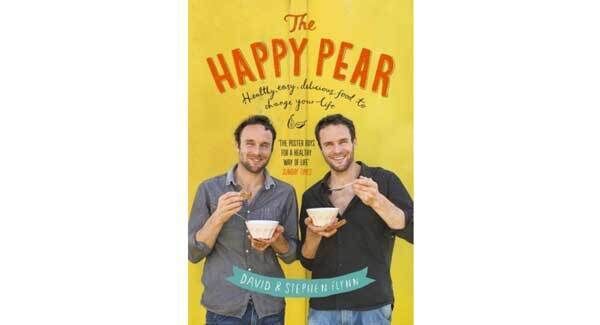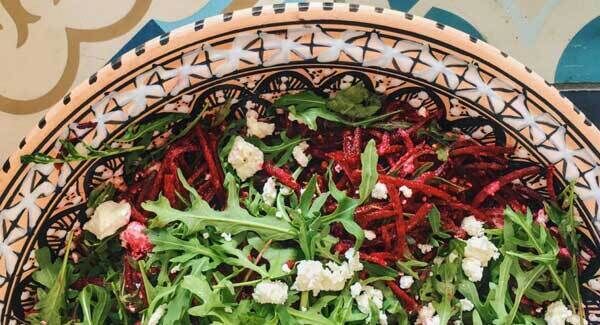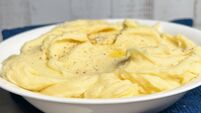Uncle Ben’s healthy plate campaign promotes healthy meals and portion control

Sure, who wouldn’t jump at the opportunity to tell a dietician exactly what you eat in any given day — including the rushed jam-on-toast breakfast and the sneaky digestive biscuits dunked in tea at afternoon-slump o’clock?
But dietician Orla Walsh is not the kind of lady to point fingers, though — and here’s a sobering fact — she does mention that having toast and butter and jam for breakfast is exactly the same as starting the day with cake.
“Even wholemeal toast?” we ask, grasping at straws.
“Well, that’s wholemeal cake,” she says, explaining that carbohydrate-rich toast is released into the system as quickly as cake, causing energy spikes and corresponding troughs.
But there’s good news, too, because rebalancing your diet is, quite literally, in your own hands.
By using your hand as a measure, you can make sure that every meal you prepare is nutritionally balanced.
Look at your plate.
Wholegrain carbohydrates and fruit should make up a quarter of your plate, or the equivalent of a clenched fist.
And how do you know that your carbohydrate is healthy?
“Simple,” says Walsh.
“If it grew out of the ground looking similar to how it looks on your plate, it’s healthy.”
Go for whole and intact grains such as whole wheat, barley, quinoa, oats, brown rice.
They have a milder effect on blood sugar and insulin than white bread, white rice and other refined grains.
The protein portion (poultry, fish, nuts, dairy, pulses, soya and limited red meat) should fit into the palm of your hand, or take up a quarter of the plate.
Then, allow two large handfuls of vegetables — the widest range possible with the exception of potatoes — to complete the meal. They should take up half the plate.
When it comes to butter or oil, use the rule of thumb – one teaspoon is equal to the end of your thumb from the knuckle upwards.
When you are measuring your dinner, though, make sure to use your own hand.
Don’t seek out the largest hand in the house and be careful not to use your hand to measure a child’s portion.
Portion size is very important, says Walsh, but research conducted by Uncle Ben’s found that most Irish people didn’t know what proportion of each nutrient they should eat.
“About one quarter of every meal should be healthy carbohydrates, but there is a big difference between chips or white bread and wholegrain rice or quinoa.
"Wholegrains are the perfect choice as they are nutrient dense, slow-release energy, and have a low impact on blood sugar ensuring a steady release of energy fuelling your body in the best way,” she said.
Back to that breakfast toast. If you’re having it, go for a sourdough spelt toast and have it with eggs or with spinach and tomatoes. Or go for porridge with nuts and seeds and berries.
When it comes to lunch and dinner, most Irish people — seven in 10 — believe that it takes at least 45 minutes to prepare a healthy meal from pan to plate.
Uncle Ben’s, however, wants to revise that belief and celebrity chef Gary O’Hanlon is on hand to whip up a healthy meal in minutes using its new rice and grains range.
The range meets the Food and Drug Administration’s definition for healthy foods.
They are low in fat and saturated fat, low in cholesterol and have less than 480 mg of sodium per serving.
Back in the kitchen, chef O’Hanlon gives me an apron, a wooden spoon and we set to, rustling up herbed basmati with feta, cucumber, mangetout, tomato and cranberries in, I reckon, seven minutes flat.
The meal is perfectly balanced and surprisingly tasty.
That’s what the Uncle Ben’s healthy plate campaign is all about – trying to encourage people to upgrade their mid-week meals to a healthier option that is quick to prepare and tasty.
If you are looking for ideas, try this recipe for power pancakes from Roz Purcell, who has also joined the campaign to encourage people to cook healthy food quickly.
You’ll find it https://www.facebook.com/unclebensireland/
IT’S hard to believe it now, but Wicklow twins, David and Stephen Flynn, the duo behind the ‘Happy Pear’ healthy eating phenomenon, were once “typical meat-eating, pint-swilling, girl-chasing jocks”, or so their publicity claims.

Then, a vegetarian diet transformed their lives. Their transformation also helped thousands of Irish people.
Their first book, The Happy Pear: Healthy, Easy, Delicious Food to Change Your Life, was the number-one bestselling cookbook here in 2014 and 2015, selling 80,000 copies.
Now, in their second book, The World of the Happy Pear (Penguin, €24 in hardback), the brothers put fun and deliciousness at the heart of vegetarian cooking.
MORE than 20,000 food enthusiasts are expected at Wexford’s eighth annual Food and Wine Festival which gets under way in Wexford today.

Taking place at a number of venues in the town, the festival features an open-air food producers’ market at Selskar Square and South Main St on Saturday and Sunday.
There will also be a Wexford Craft Beer Trail, foraging trips, food demonstrations and a foodie photo competition.
The festival is organised by a committee of volunteers and most of the events are free.
Twitter @Wexfordfoodfest and www.Facebook/wexfordfoodfestival
LUNCH to go has to be quick — but now it has to be healthy too.
People insist on it, says Stephen O’Dwyer who has just opened Tang, a new Middle Eastern eatery on Dawson St in Dublin.
“People want healthy, on-the-go lunches that don’t comprise on deliciousness,” he tells Feelgood.
O’Dwyer has already made a name for himself serving healthy breakfasts at frozen-yogurt spot Yogism in the George’s Street Arcade. Tang has lots of healthy options, including salad boxes, a range of hummus, flat breads, and soups.
GENETICALLY modified (GM) food is safe to eat, according to one of the most comprehensive reviews of the controversial subject to date.
The National Academies of Sciences, Engineering and Medicine, an advisory body that includes more than 300 Nobel prize-winning scientists, published a 380-page report earlier this month dismissing claims that GM crops can cause disease or harm wildlife.
The report referenced almost 900 studies on GM crops over the last 30 years.









